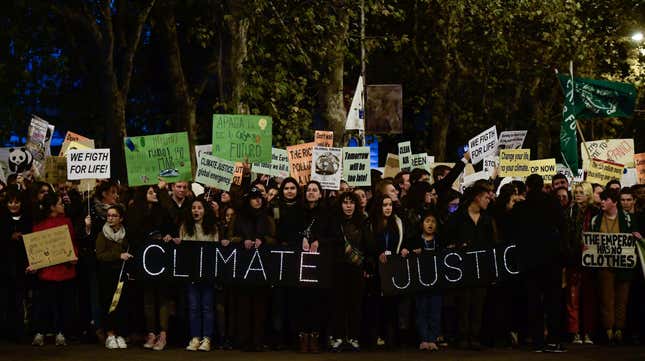
A new report shows that environmental organizations are improving diversity among staff, but they’ve still got a long way to go.
For five years, environmental group watchdog Green 2.0 has been putting out an annual report card of sorts on how different environmental nonprofits and foundations are doing when it comes to hiring and promoting people of color and women. Since 2017, many of the major environmental organizations in the U.S. have seen an increase in the number of people of color on staff, especially among senior staff and board members. Unfortunately, this statistical difference only appears when the report removes the largest organization (which is unnamed in the report) from the mix that’s largely white staff skewed results.
Without it, the average number of full-time people of color in the organizations increased by 2 percent to 52 in 2019. Among senior staff, however, there was a 4 percent increase from 2017 to an average of 6 senior staff at these organizations, including the largest one surveyed. For board members—one of the highest and respected positions at these institutions—the increase was 3 percent, which translates to an average of one person of color added to groups’ boards.
“This is the beginning of progress,” Whitney Tome, the executive director of Green 2.0, said on a press call. “It is critically important that all these NGOs and foundations are more in tune with the demographics of the United States.”
This is good news! The mainstream environmental movement at large has a white people problem. And by that, I mean, it skews too white and isn’t representative of American society, particularly given the disproportionate impact of environmental ills people of color bear. This issue impacts both science and policy. Given the racist history behind the rise of conservation and the creation of national parks, the green movement has a lot to reckon with. Hiring people of color is the bare minimum these groups need to be doing.
But while this report saw its highest voluntary participation from organizations, including data from 90 percent of the top 40 environmental nonprofits and 35 percent of their top 40 funders, it still offers only a tiny snapshot of what these organizations actually look like. And Tome noted that she is “cautiously optimistic” about these findings because organizations still need to bring more people of color into the fold and their long-term commitment has yet to be tested.
One thing the report doesn’t get into is representation at small and mid-sized environmental organizations. Dorceta Taylor, a professor at the University of Michigan and author of the first Green 2.0 report released in 2014, has conducted research on this very topic where she’s surveyed thousands of groups. She’s glad to see some improvement among mainstream nonprofits, but she said the results aren’t as positive when you look at smaller places. Change just isn’t happening as rapidly or at the same level for groups with fewer employees.
“That’s one thing to make very, very clear: There is still a lot of work to be done,” Taylor told Earther.
Part of the challenge, she said, is that these groups aren’t putting money toward diversity initiatives. They also don’t always know how to recruit people of color.
She credits, in part, the younger generation for this newfound interest in diversity among organizations. We’re seeing young people completely transform the environmental movement through climate strikes, lawsuits, and direct action. Instead of running to these legacy environmental organizations for opportunities, many of these teens are even creating their own environmental organizations that are in line with their values.
“This younger group of students, they see it differently, and they want something different,” Taylor said.“They want climate justice. They want energy justice, not just energy or climate change. They want a combination of things that help them to get at the social inequalities that underlie and are disproportionately impacted in some ways by some of these mega-events and wicked problems that we see and have.”
That type of perspective is what’s needed because solving climate change, cleaning up polluted areas, and addressing the environmental crisis won’t happen without engaging communities of color. This work can’t succeed without bringing in the communities being most affected by this mess into discussions and actions around finding solutions.